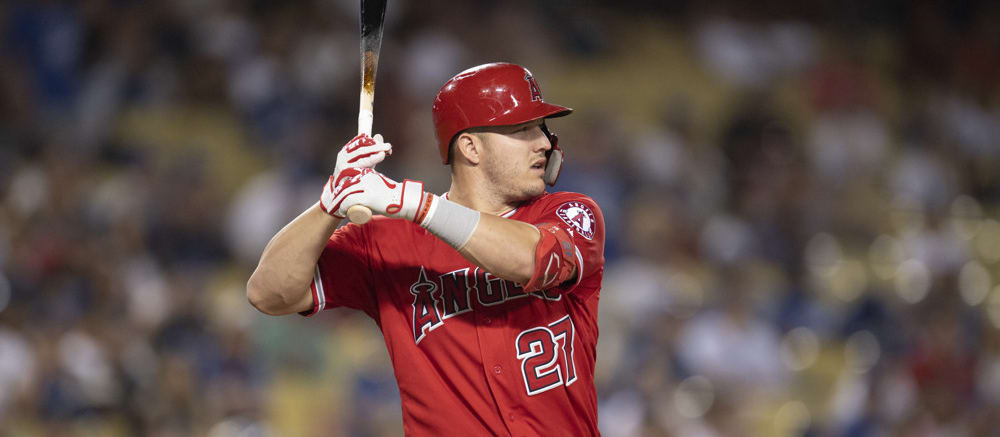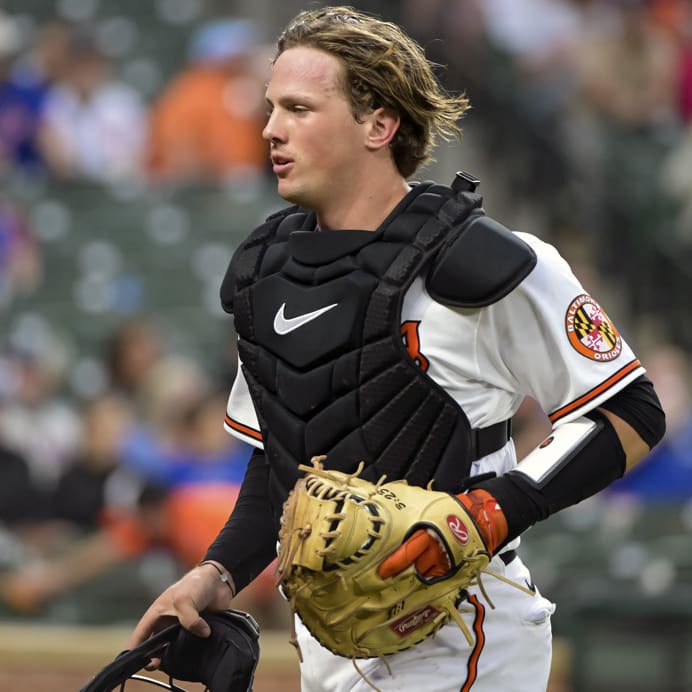This article is part of our MLB Observations series.
Normally we have to guess as to what MLB is doing with its baseball. In the second half of 2016, it switched to a livelier ball that carried into 2017, a year that set all-time records for home runs (1.26 per team, per game.) Then in 2018 it reverted back to full season 2016 levels (1.15 per game.) But in 2019, the baseball was re-juiced to a new all-time high (1.39 per game.) That year a rookie (Pete Alonso) hit 53 homers, Eugenio Suarez hit 49 and Jorge Soler hit 48 while playing in Kansas City. (No other Royal has ever hit 40.)
Last season, the number regressed to 1.28 HR/game in a two-month sample under odd conditions. Lest you think that were a significant change, 2020 was the second-highest rate of all time, ahead of 2018 and behind only 2019. Accordingly, I was planning to draft as though we were somewhere in the 2017-2020 range, i.e., assuming it was still an all-time home-run-friendly era. In which case, I'd be taking at least two aces with my first three picks, as useful hitting the last several years has come out of the woodwork. One of my best teams ever, a 2019 12-team NFBC Online Championship squad, for example, got Yuli Gurriel (31-104-85-.298-5), Danny Santana (28-81-81-.283-21), Mitch Garver (31-67-70-.273) and Bryan Reynolds (16-68-83-.314-3) from the waiver wire. When everyone can rake, there is no scarcity of premium hitting, and in fact it's the premium pitching that delivers the most bang for the buck.
But as Eno Sarris of the Athletic reported, MLB is tinkering with the ball again, only this time giving us a heads up that it's being de-juiced. Sarris writes:
The MLB memo includes a footnote that says an independent lab found that fly balls that went over 375 feet lost one to two feet of batted ball distance with the new ball. That also sounds like no big deal, but every 3.3 feet of distance increases the likelihood of a home run by ten percent. An analyst familiar with the physics and math of this situation said the relationship was linear enough to estimate that this change will reduce home run rates by around five percent.
I won't get into the physics behind that estimate -- Sarris (and co-author Ken Rosenthal) do a good job delving into the details, and you can read about it there. But with all due respect to the lab and the cited analyst, I am dubious they can calibrate the changes with such precision. It's one thing to estimate how the new ball should play and quite another to see what happens in the wild with different park dimensions, weather patterns and of course players adapting to those changes. As Nassim Taleb says, in complex systems, there's often a big difference between x and f(x). In fact, Sarris cites small changes to the ball in the KBO that reduced home runs by 30 percent year over year.
A 30 percent decline in home runs would be seismic in this environment, but it would put us only back to 2015 (1.01 HR/G). But the KBO example isn't the outer bound, but merely a reminder that slight changes to the inputs can have a drastic impact on outputs. A decline of 50 percent, or even an increase (the new ball, while less bouncy, is slightly lighter), is in play too. So while the most likely outcome might be a small decline (somewhere between zero and 15 percent), one should consider less likely but plausible unintended consequences too. If we were to switch to a pitching-friendly era, freely available, useful hitters might become few and far between, while quality pitchers suddenly grow on trees. In such an environment, locking up the best hitters early and drafting for pitching upside late (and streaming heavily) would give you a big advantage, especially now that the cost of elite pitching in the NFBC, for example, has skyrocketed.
That said, MLB has telegraphed its move, and the market will expect some decline in home runs. But it's possible (though less likely) home runs even increase, making run-of-the-mill pitchers even more dangerous and pushing even more of the pitching value toward the top. In that case, an extreme pitching strategy (aka the Dalton Del Don) might instead offer a massive advantage.
The bottom line is we know the ball is changing, we just can't be sure how much (or even in what direction), despite MLB's assurances. In a changing and unpredictable environment, the key isn't to guess how it will shake out but to position oneself to profit asymmetrically, given plausible, but overlooked outcomes. In fact, I'd argue there's merit to extreme strategies every year, just in case something changes drastically (as it has many times in the past), but this year we're getting the heads up in advance.











